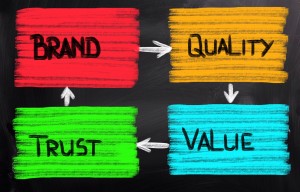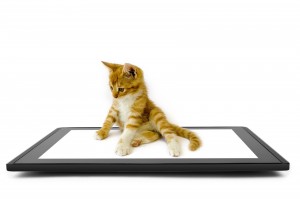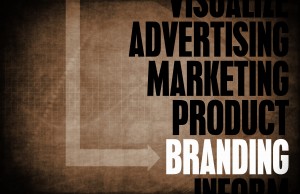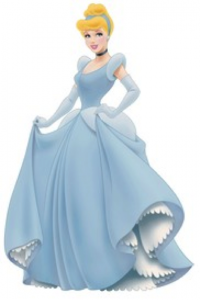You ARE the Brand, Not the Logo
 Let’s Talk about Brands
Let’s Talk about Brands
What is a brand? We’ve defined it as the essence of the company and how it delivers its goods and services. Those things that make the company unique.
However, if you asked most people about brands, they would probably respond by commenting on a logo or graphic or name. All of those things are true. The logo is part of the brand, so are the way graphics are used and the name of the company or product.
While we may think of branding in terms of logos of big retail and packaged goods firms – McDonald’s, Coke, Target, Procter & Gamble, or cool online brands like Uber or Shutterfly – branding is critical for all businesses. That includes small businesses and B2B or commercial/industrial firms.
Brands for Large Companies
For large companies, different graphic, in store and online elements make up the brand representation. For Coke, it really doesn’t matter how nice the owners are. You don’t buy Coke vs. Pepsi on how the middle managers of the company act. You buy it on taste and how it makes you feel. “Share a Coke with a Friend” makes me feel good about Coke. I recognize the bottle shape. It may remind me of a fun time at a ball game. “Live for Now” from Pepsi makes me feel young and hip. (not really…but that’s what they’re going for…)
You get the idea… big companies use advertising and brand elements like signs, packaging and digital content to drive their message and marry the experience of using their product to other appealing concepts and people.
Brands for Small Businesses
Meanwhile, over at your small business, you don’t have $10 million to spend on the shape of the bottle or the super bowl commercial and online contest. Still, brand matters. And you control it!
For smaller companies, the brand is still about the essence of the company and the customer experience. Just like it is for the big guys. The difference is that almost always, the powerful brand elements of a small business are people. You are the brand. Your staff is the brand. The service you provide, the way you do business, even how you talk about your company, products and services… all of these things are your brand.
An example – a small company I worked with had a great person answering the phone and greeting people at the door. She was so good, it is difficult to call her a receptionist. She was a customer service expert. That person, in large part, was the brand of the company. Customers knew who they would hear or see when the engaged the company. And it was good!
The rest of the company’s staff also had a customer-focused “get it done” manner. They only made promises they could keep. They exceeded expectations. You know the type of firm I’m describing (well, hopefully you do!).
As we were working on describing in words, graphics and online the company, it was really the work of capturing the essence of that customer experience. Was design important? Absolutely. Was creative and copywriting critical? Of course! However, we weren’t developing ideas that would make the brand of the company, we were coming up with ways to reflect the experience customers were already having with the company through its excellent owner and staff. We wanted to communicate how the company already went about its work.
True Brand
The true brand was how they did business. And that is how it should be. So when developing brand elements, whether a logo or a tagline or a website… be sure to start with who you are as a company and work from there. It’s fine to be aspirational… to describe how you want the company to be, that can have a self-fulling quality to it. However, there must be some level of reality, some basis to make those aspirational leaps.
Bottomline: a good brand comes from the unique attributes of a company. It’s the job of we marketers to uncover the brand attributes with you and then reflect those good things in the images and words used to describe the company. Those messages then can entice prospects with a “taste test” of how it really is to work with the company.
If you’d like help uncovering your brand attributes and developing branding that reflects it, contact us. We love to hear a company’s story.


 The internet remains a mystery. No, this is not a commentary on why kitten videos are so popular, but rather about how a small to medium size business deals with online marketing. It’s a mysterious world of online marketing.
The internet remains a mystery. No, this is not a commentary on why kitten videos are so popular, but rather about how a small to medium size business deals with online marketing. It’s a mysterious world of online marketing. I read a study that analyzed social media comments (in particular, tweets) about advertisements. While one intuitively knows that the data will be cranky (what other purpose is there for social media than complaining?!?), it is instructive when considering the themes of the comments.
I read a study that analyzed social media comments (in particular, tweets) about advertisements. While one intuitively knows that the data will be cranky (what other purpose is there for social media than complaining?!?), it is instructive when considering the themes of the comments.
 So, I took the path of avoidance. We didn’t initiate the princess domino run by not letting her see a Disney movie. Sure, she had books that told some of the older fairytale stories, but we didn’t buy (or rent) any of the full length features.
So, I took the path of avoidance. We didn’t initiate the princess domino run by not letting her see a Disney movie. Sure, she had books that told some of the older fairytale stories, but we didn’t buy (or rent) any of the full length features. I, too, am glad that Disney has changed its princesses as the culture has changed. Yet, I think the (too often) anachronistic values and sensibilities of the movies made in the 40s and 50s can be a learning tool as well. Yes, it was a different place, time and culture, but those are our roots and there are plenty of women who still (as a part of their life at least) want to find their prince. Today, however, that desire is not an all-or-nothing choice.
I, too, am glad that Disney has changed its princesses as the culture has changed. Yet, I think the (too often) anachronistic values and sensibilities of the movies made in the 40s and 50s can be a learning tool as well. Yes, it was a different place, time and culture, but those are our roots and there are plenty of women who still (as a part of their life at least) want to find their prince. Today, however, that desire is not an all-or-nothing choice. I love soccer. The other night I was watching a game and the goalie (I played goalie) bollocks-ed a save. Real howler (that’s english football lingo)… bad goal and he was looking like it. Really unsteady. And everyone on his team and fans looking at him like… you know.
I love soccer. The other night I was watching a game and the goalie (I played goalie) bollocks-ed a save. Real howler (that’s english football lingo)… bad goal and he was looking like it. Really unsteady. And everyone on his team and fans looking at him like… you know.